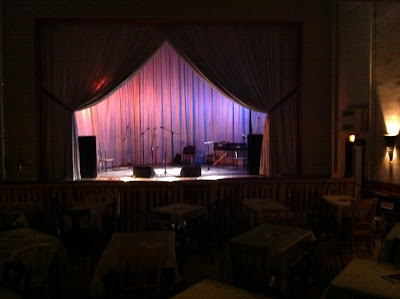The system design for Ultimate Audio Book was centered around the idea of immersing the audience in the story. To accomplish this we drew up a system design that would surround the audience, and take advantage of our large black box theatre. Shown below is the initial idea and notes, the large rectangles are the seating units, and it is hard to see but the dashed square is the area where the actors would primarily be in for the plays. The speakers in the middle would be hung in the catwalks.


To take advantage of the catwalks that act as a second floor in our black box theatre four more speakers were added, also more speakers were added behind where the actors would be, and the speaker pair that was in front of the seating unit were removed. the location of the sub (QSC on the first draft) was moved and a second one was added to balance the room and help fill the room with low end if the sound designs needed it. The second draft is shown below, the 5x500 speakers are the ones in the catwalks, and the vox speakers are still hung from the catwalks and point at each seating unit.
The final draft of the system added speakers in the seating units, except the seating unit where the sound board and equipment is located, which only had one speaker added. These additional speakers allowed sounds to be placed in seating units when it is needed. The final draft is shown below.
The show used the Yamaha O1V96 digital console and the Eventide Eclipse for vocal effects.
The signal flow is shown below
This system allows the sound to come from anywhere the theatre, sounds can come from above the audience, all around the audience, or from a single location letting the audience feel as though they are in the story world.
This system design received the Certificate of Merit, and won the KCACTF Theatre Craft Showcase.
















